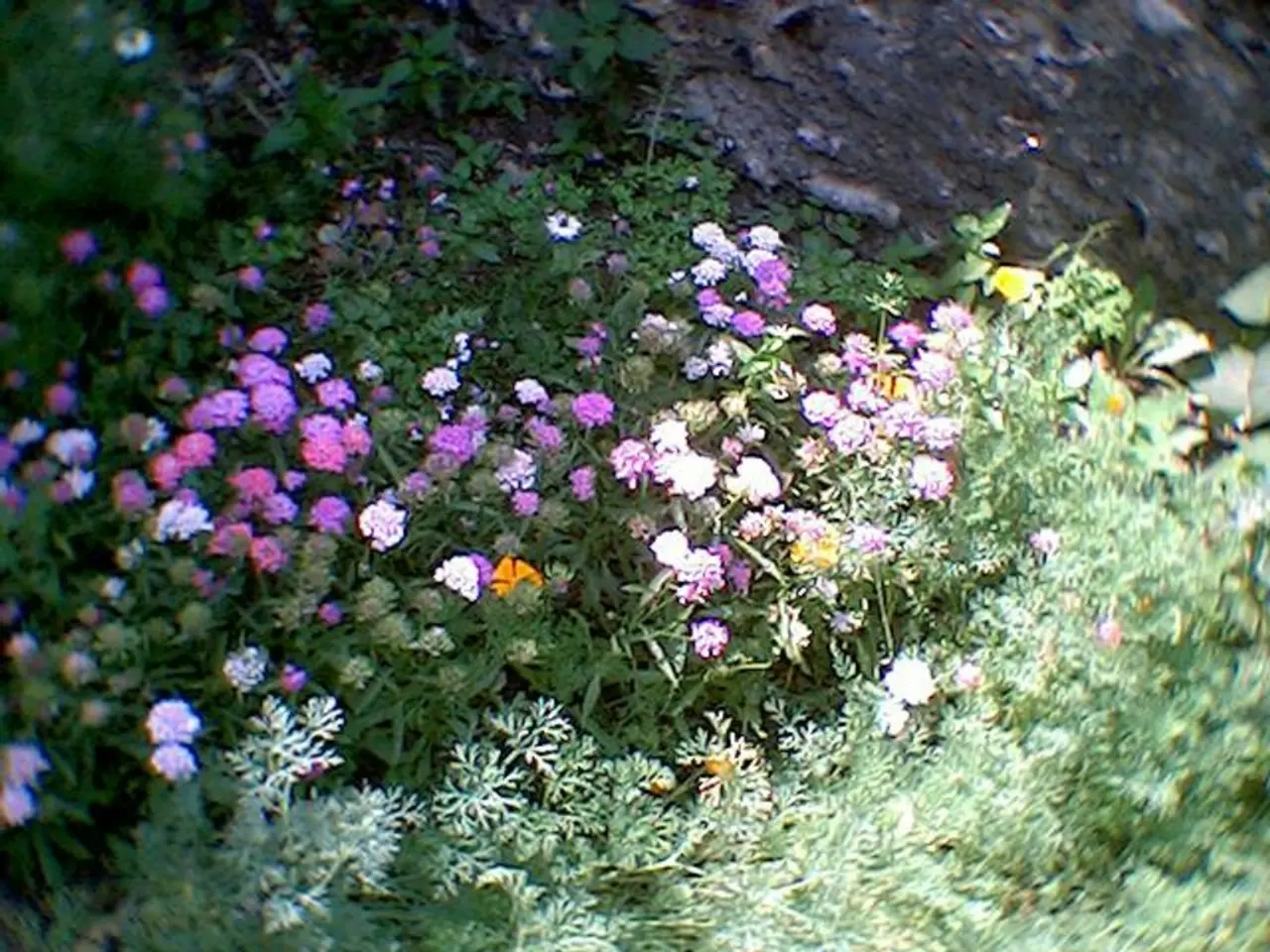Transform Your Backyard into a Thriving Habitat for Pollinators with These 6 Indigenous Flowering Shrubs
In a bid to support local wildlife and promote sustainable gardening, consider growing a pollinator garden with native flowering shrubs. Here are six excellent options that bees, butterflies, and hummingbirds will love:
- Rubber Rabbitbrush (Ericameria nauseosa)
Native to most of the western United States, Rubber Rabbitbrush is a hardy shrub that grows up to 5 feet tall. It thrives in full sun and can be used as a low hedge. The shrub's yellow, small, tubular flowers grow in clusters, providing a valuable source of nectar after many plants have stopped blooming in the fall.
- Apache Plume (Fallugia vivipara)
Apache Plume is a semi-evergreen shrub native to the southwestern United States, growing up to 6 feet tall. It is one of the best native shrubs for pollinators and is also drought-tolerant, making it suitable for xeriscaping gardens. The shrub's white flowers attract pollinators and transform into large, fluffy seedheads, adding visual interest to your garden.
- Common Buttonbush (Cephalanthus occidentalis)
Hardy in USDA zones 5-11, Common Buttonbush is native throughout much of the eastern halves of the United States and Canada and also in the southwest. It can grow up to 8 feet tall and wide and looks best when pruned. This shrub is a great option for wet areas of the garden, as it grows naturally in marshes and bogs. Its round, golf ball-sized white flowers are a significant draw for pollinators.
- Serviceberry (Amelanchier spp.)
Native to the eastern US, Serviceberry can be grown as a large shrub or small, multi-stemmed tree. It provides spring flowers, purple fruit, and fall foliage, making it an attractive addition to any garden. The small flowers are loved by pollinators while the berries are eaten by birds and edible for people.
- Summersweet (Clethra alnifolia)
Also known as sweet pepperbush, Summersweet has small flowers that grow in clusters on long racemes and bloom in late summer, providing a more continuous source of nectar. It can grow up to eight feet tall and six feet wide.
- Winterberry (Ilex verticillata)
Winterberry is a deciduous native holly that attracts butterflies, bees, and other small pollinators in the fall. It is native to most of the eastern United States and Canada. The shrub provides berries that feed birds throughout the winter.
Beyond these six shrubs, other native flowering plants such as American Elderberry, False Indigo-bush, White Wild Indigo, Red Columbine, and Foxglove Beardtongue also offer valuable resources for pollinators. To maximise the benefits for pollinators, group these shrubs in clusters and aim for successive bloom periods from spring to fall. Most of these species thrive in well-drained soil with adequate moisture, full sun to partial shade depending on the species, and require minimal maintenance once established.
By incorporating these native flowering shrubs into your garden, you can contribute important habitat and food resources for a variety of pollinators, helping to ensure the health of local ecosystems.
- Incorporating native flowering shrubs, such as the Rubber Rabbitbrush, Apache Plume, Common Buttonbush, Serviceberry, Summersweet, and Winterberry, into your home-and-garden or lifestyle can provide a rich lifestyle for local wildlife by offering vital food resources and habitats for pollinators.
- To extend the blooming period from spring to fall and encourage a more diverse pollinator population in your garden, consider grouping these shrubs together and including other native flowering plants like American Elderberry, False Indigo-bush, White Wild Indigo, Red Columbine, and Foxglove Beardtongue, which also benefit pollinators.








